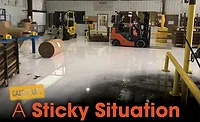Prepping for Disaster Special Section
Case Study: Surrounded by Water
Category 3 water, kayaks, & a trailer
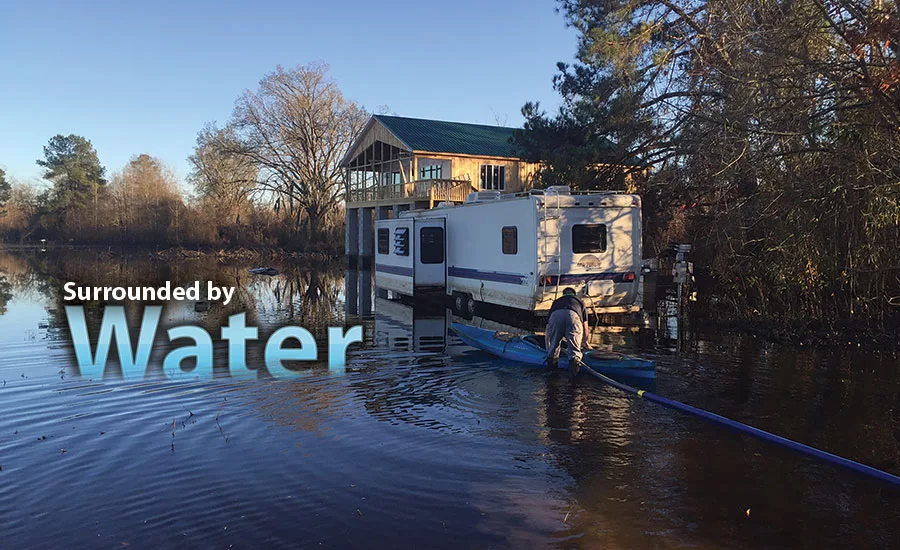
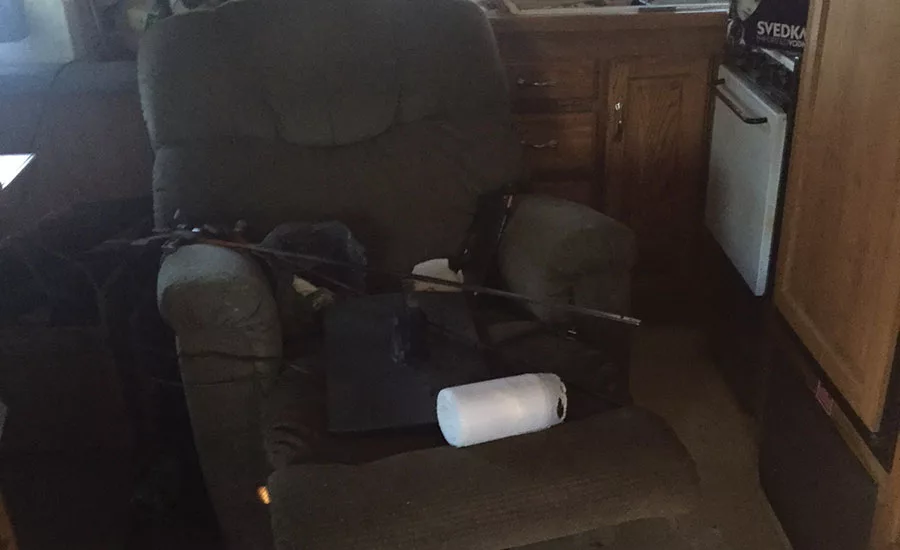
A water-logged chair sits in the middle of the once flooded space.
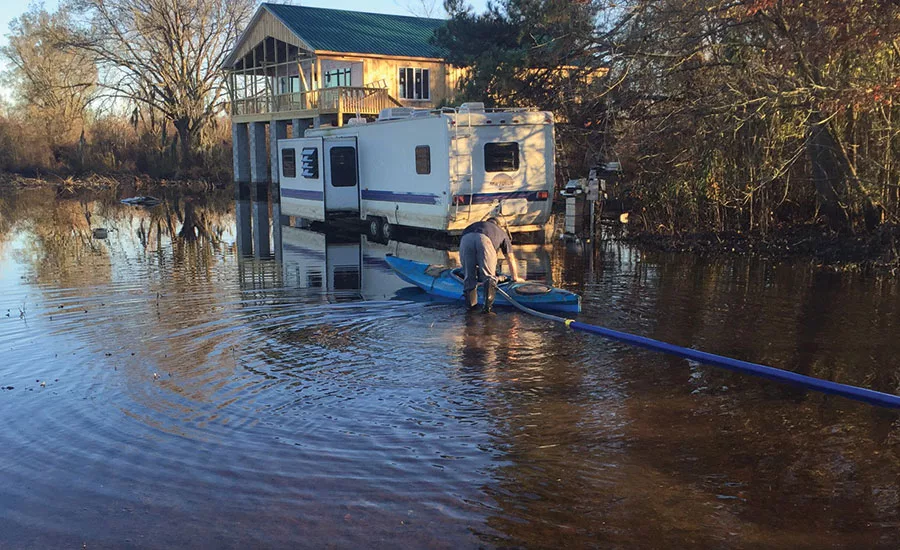
Aboard a kayak, equipment is carefully paddled to the trailer completely surrounded by water. If you take a close look, you can see the line of scum going about halfway up the side of the camper, showing just how deep the water was before it started to recede.
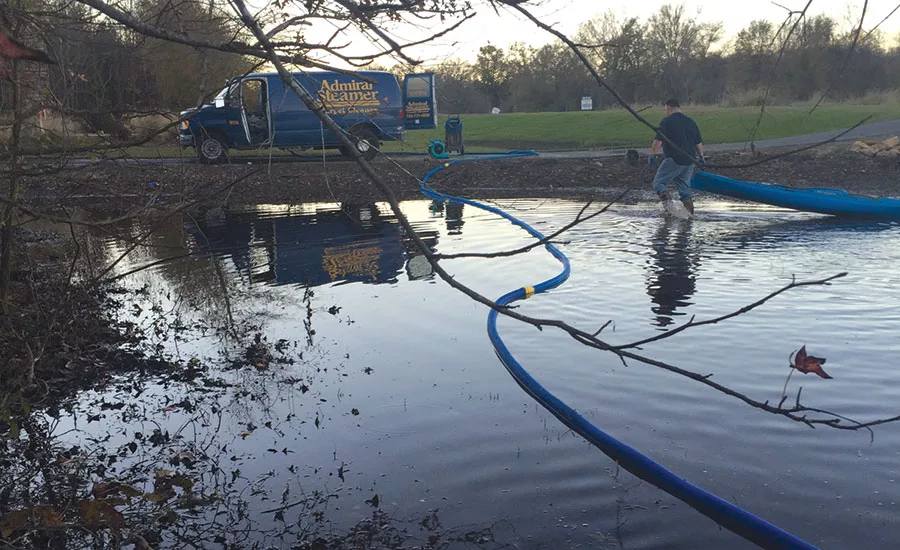
About 50 yards away, an Admiral Steamer van awaits with supplies.
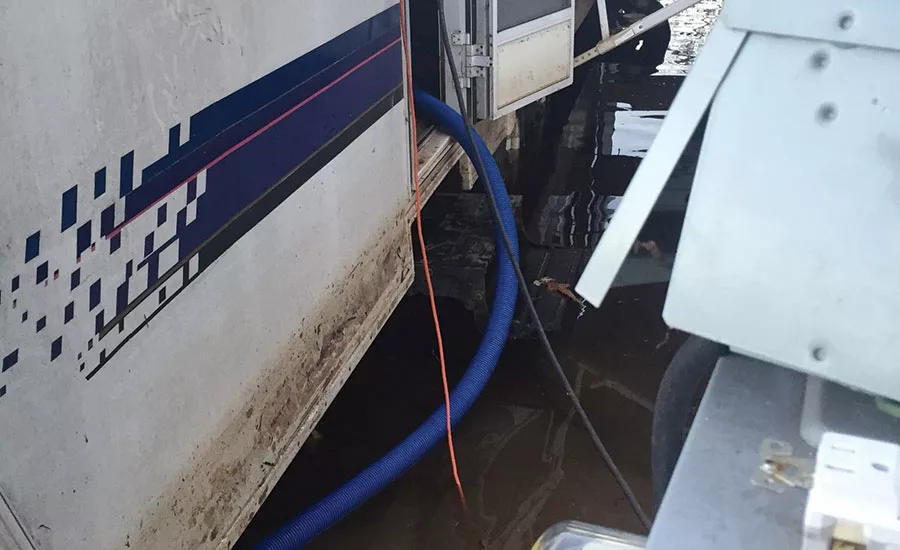
This is a closer look at how high the water rose on the camper, before receding back into the Savannah River.
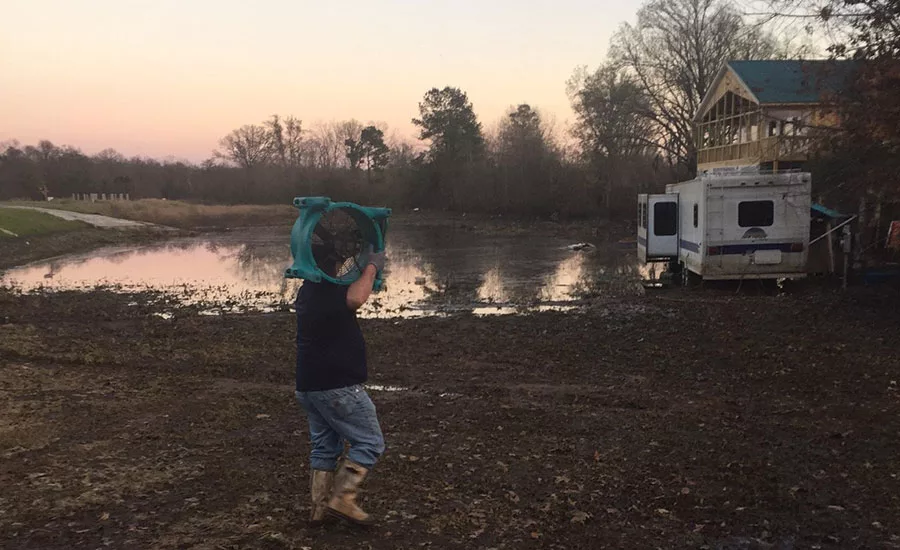
Once the land started to dry, a good pair of boots was enough to carry equipment through the muddied mess to the camper.
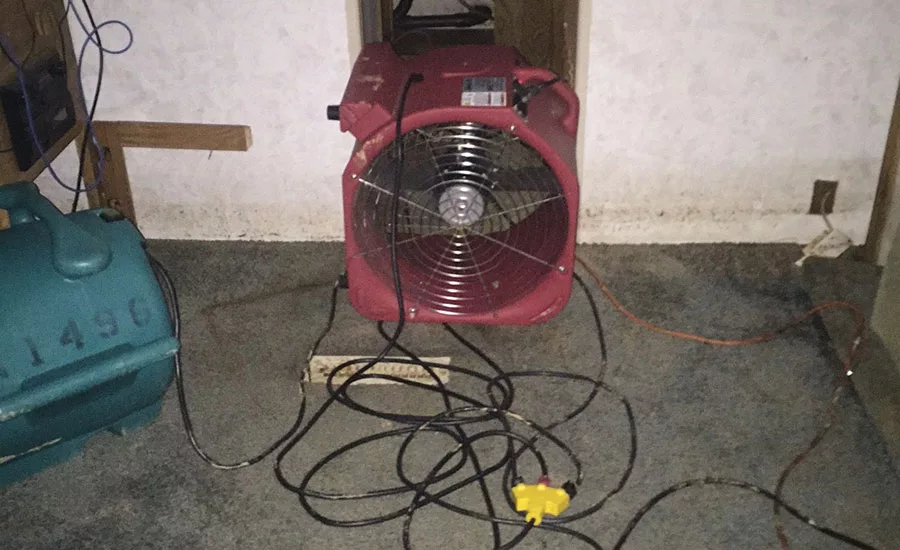
Inside the camper, you can see the dirty mess on the carpet, and again a line on the wall showing how high the water reached inside.
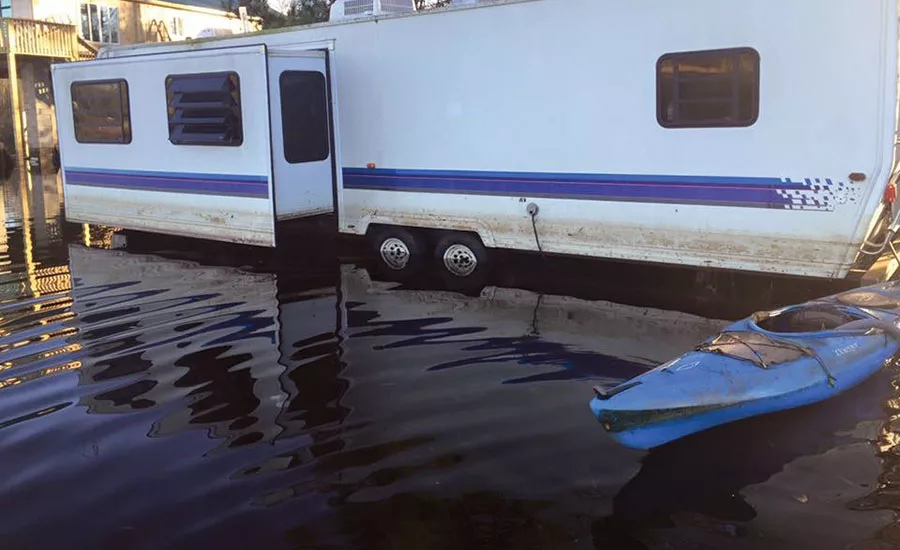
The next disaster is imminent. It always is. That might be a Debbie Downer attitude, but it’s the truth, especially when you think about disaster on a more local scale. While a hurricane can impact a dozen states and trigger an emergency declaration by the president, there are a lot of small communities that face their own disasters much more frequently.
In January, the Army Corps of Engineers opened the flood gates of Thurmond Dam, allowing levels on the Savannah River in Georgia to rise. In some cases, that meant flooding homes in its path. Localized flooding like this is relatively commonplace around the U.S. While it might not earn a federal disaster declaration, it sure feels like a disaster to the local community that is impacted. It can take weeks for the water to recede, and even longer to clean up and restore properties.
Flood Stages & Flood Insurance
According to data from the National Weather Service, the Savannah River just below the Thurmond Dam crested at about 118 feet on Jan. 2, a level that is between the NWA’s “flood stage” and “moderate flood stage” categories. Further down river, levels reached “moderate”, and almost “major flood stage.”
You can easily track the rise and fall of local rivers on water.weather.gov. It will give you an idea of flood season in your region and what specific areas will flood depending on river levels.
It is data like this that plays a role in whether or not property owners in that area qualify for flood insurance. In some high-risk areas, people with federally-backed mortgages can be required to carry flood insurance. However, according to FEMA, about 20 percent of all the National Flood Insurance Program flood insurance claims come from people outside mapped high-risk areas. Plus, about a third of the people filing claims end up receiving Federal Disaster Assistance during the cleanup process. Don’t be fooled by that phrase, however. Federal Disaster Assistance usually comes in the form of a loan from the government that must be paid back, with interest. Some homeowners who call you for help may be unaware that their homeowner’s insurance policy does not cover flood damage.
An Unusual Commute
Then, there are homeowners who call with a unique situation. When the Savannah River flooded, Admiral Steamer, headquartered in Augusta, Georgia, got a call from a woman who said the trailer she currently lives in during remodels to her home was not only flooded, but also completely surrounded by water. Admiral Steamer dried three homes in this area during this particular flood, but it was this job that stands out.
“All the houses in that neighborhood had flooded,” explained Billy Carroll, second-generation owner of Admiral Steamer.
“The homeowner called and needed our help with a camper that had been damaged by a flood. We arrived about an hour after the call came in and were shocked to see that the camper was not only flooded, but still underwater,” Carroll said. “My project manager, Jonathan Stringfield, and I joke about how cold that water actually was that day.”
“For the first time in my years in the business the first problem wasn’t deciding the best drying method, but how to even get the drying equipment to the camper,” Carroll said. He quickly realized carrying drying equipment to the camper wasn’t going to work. So, he purchased some kayaks to move the equipment from the road to the camper. Each was loaded up with generators, turbo dryers, disinfectants, and other items they needed to dry and disinfect the space.
“It beats going back and forth is waders,” Carroll remarked about the job. “It was a lot of equipment.”
The homeowner was evacuated for a few days due to the high water, but did don some waders one day of the cleanup process and was thrilled with the process Carroll and his team were making in the home.
They acted quickly as the water receded to dry the space, and worked to disinfect and clean every square inch with an antimicrobial. They were able to save most of the homeowner’s hard contents.
The Possibility of Category 3 Water
Since they were dealing with flood waters, Carroll was careful to keep safety first during the four-day cleanup. If men wore waders over to the trailer, they had to fully remove those when they arrived, and put on full safety gear. It was all quite a process.
“We wore Tyvek suits, full-face respirators, gloves, boots, the whole nine yards,” he said. “Safety first. I promise you, it will pay off.”
A flooded river like this could mean the water between Carroll’s team and the trailer was considered “Category 3.”
Here is what the IICRC has to say about Category 3 water: “This is the worst classification and is grossly unsanitary. It could cause severe illness or death if ingested. It used to be called black water, and sources include sewer backup, flooding from rivers and streams, toilet overflow with feces, and stagnant liquid that has begun to support bacterial growth.”
Ed Jones, the vice president of education, research and development for CodeBlue, agrees with that phrase. On the most basic level during a water remediation job, workers should wear disposable coveralls with a hood, boots, nitrile gloves, and a full-face respirator with P100 filters. For Category 3 water, which could contain bodily fluids or other waste, Jones says wearing waterproof PPE covering every inch of skin is necessary.
“This is the most important issue on all water losses. It protects the health, safety and welfare of the customers and the workers,” Jones explained.
As for Carroll, he looks back on this job with a smile. The homeowner was exceedingly happy by their efforts, and Admiral Steamer is even more prepared now for the next flood, whenever it may come.
Looking for a reprint of this article?
From high-res PDFs to custom plaques, order your copy today!




